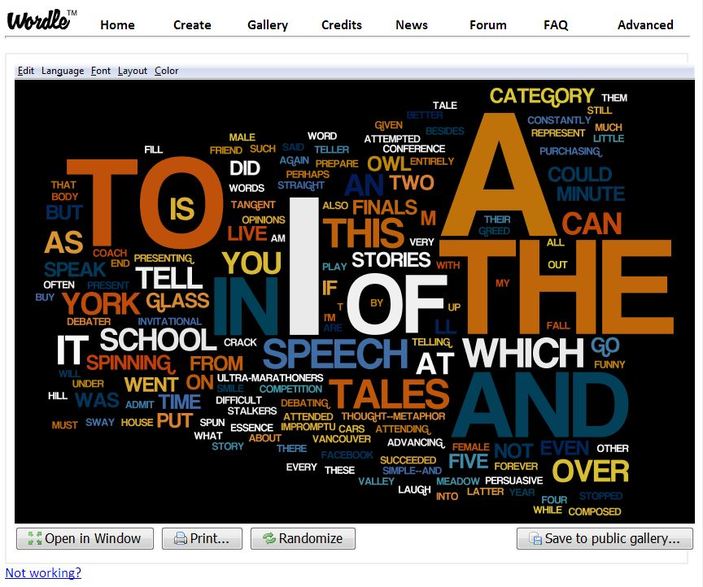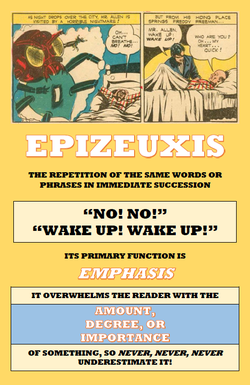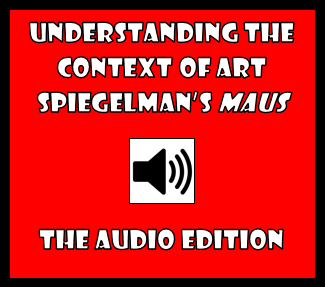CITE 2014 -- The Top 5 Things for Students to Look for After Turning Their Essay into a Wordle
4/13/2014
by Glen Downey, Comics in Education, www.comicsineducation.com Using Wordle as an Analytical Tool Can Make a Big Difference! In addition to using Wordle.Net to analyze poetry, music lyrics, and the like (to identify key words that serve to reveal prevailing themes, for example), wordles can be used to look at the completed draft of an essay and provide valuable information about it. Here are the top five things students should look for after putting their essay into a wordle. 1. The largest word in the cloud Typically, the word "the" will be the largest word in the cloud. That's not surprising since it's the most common English word. In the example above, however, the student has written a personal reflection, so it's not surprising that "I" is the most frequently occurring. What students should make sure of, however, is that there isn't an unusual word that is the most frequently occurring because this will likely indicate the unnecessary repetition of a word in the paper. However, to do a proper check, the student must go to the language tab and tell Wordle.Net not to remove commonly occurring words. The Java program removes them in its default setting. 2. The relative distribution of words Other than commonly occurring words like "a," "the," and some of the basic pronouns and conjunctions, the other words in the essay should have a distribution about them that makes sense. If the name of the book a student is writing about is a bit larger than the other "less common" words in the cloud, that makes sense. However, if such a word is dominating the wordle, it's a source for concern. The more evenly distributed words are in a wordle in terms of their size, the more likely that the student has found an acceptable balance in his or her use of diction in the essay. 3. The size of the word "and." If the student cannot see the word "and" in the wordle cloud, this is a big problem. It means one of two things: (1) The student has used primarily simple sentences with few coordinating conjunctions and has likely written a very stilted essay, or (2) The student has constructed a significant number of comma splices and/or run-on sentences. 4. The size of the word "because" If the word "because" is very tiny or virtually invisible in the cloud after the student cuts and pastes in a persuasive essay, this is also a big problem. The word "because" is one that we use when we are attempting to prove or explain something. Without it, how is the student effectively making their case? How are they proving or explaining what needs to be proven or explained? 5. The use of the verb "to be" Younger writers who are still developing tend to overuse forms of the verb "to be." If words like "is," "was," "were," and "are" seem very large in comparison to the next most frequently occurring verbs, there can be a significant issue. The student should reread their paper and try to find better and more appropriate verbs when these are called for. It was great to present these ideas at CITE2014, and to talk about the application of other technologies to benefit student writing. If you couldn't make it to the workshop, here's the handout!
0 Comments
Your comment will be posted after it is approved.
Leave a Reply. |
Glen DowneyDr. Glen Downey is an award-winning children's author, educator, and academic from Oakville, Ontario. He works as a children's writer for Rubicon Publishing, a reviewer for PW Comics World, an editor for the Sequart Organization, and serves as the Chair of English and Drama at The York School in Toronto. If you've found this site useful and would like to donate to Comics in Education, we'd really appreciate the support!
Archives
February 2019
|




 RSS Feed
RSS Feed
